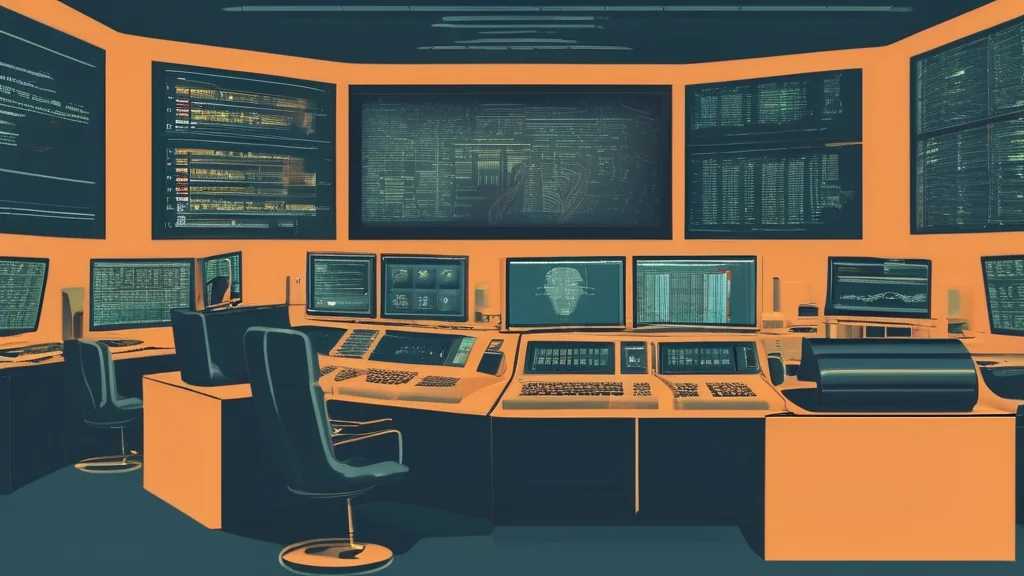The Human Element in Automation: Lessons from a Typo That Brought Down Amazon
Exploring the Human Element in Automated Systems Through a Real-Life Error

- A typo caused a major outage at Amazon, highlighting the human element in technology.
- Human error is a factor in 95% of data breaches.
- Redundancy and backup systems are crucial for recovery.
- Balancing automation with human oversight is essential.
- Organizations should foster a culture of learning from mistakes.
Introduction: A Typo That Echoed Across the Digital Landscape
In the high-stakes world of technology, where systems run millions of operations per second, a single typo can unleash chaos. This is the story of such a typo—an error that, for a few intense hours, brought Amazon, one of the world’s largest online retailers, to its knees. It’s not just a tale of a mistake but a powerful reminder of the delicate interplay between human oversight and automated systems.
The Incident: How a Simple Mistake Crippled a Giant
Our story begins over 20 years ago, with a Linux sysadmin we’ll call “Ken.” Ken had landed a job at Amazon, a role he candidly admitted he was “completely unqualified” for at the time. His background as a Solaris admin had opened the door, but the Red Hat Enterprise Linux environment he found himself in was unfamiliar territory.
Ken’s crucial task was to upgrade Amazon’s tape backup application. Months of meticulous planning and testing culminated in a successful rollout. Or so it seemed. Hours after declaring victory, Ken’s pager rang with urgency. Amazon.com was down, and Ken was thrust into a crisis involving very senior executives, including then-CEO Jeff Bezos.
The culprit? A typo in the configuration files Ken had created, which prevented the deletion of database logs. This oversight led to a log file buildup that eventually filled the partition, causing the database—and Amazon’s entire website—to stall.
Understanding the Human Element in Automation
Ken’s story underscores a critical aspect of technology management—the indispensable human element. While automation and technology can optimize processes, human oversight remains crucial. Ken’s error was not due to negligence but rather an honest mistake in a complex system. It’s a stark reminder that even in a world driven by algorithms, humans are fallible, and their errors can have outsized impacts.
The Role of Human Error in Technological Failures
A 2017 study by IBM Security found that human error was a contributing factor in 95% of all data breaches. Whether it’s a misconfigured server, a missed patch, or a typo in a script, the potential for human error is vast, and its consequences can be severe. In Ken’s case, the typo was a single character out of place, yet it brought a technological giant to a halt.
The Importance of Redundancy and Backup Systems
Ken’s experience also highlights the importance of robust redundancy and backup systems. Despite the initial panic, the situation was recoverable because the backup processes were functioning correctly. The logs were intact, allowing for a swift resolution once the typo was identified.
Real-World Examples of Redundancy in Action
Consider the 2018 Google Cloud outage that affected services like YouTube and Snapchat. Despite the widespread disruption, the redundancy and failover systems in place allowed Google to restore services rapidly. Such systems are designed to mitigate the impact of unforeseen errors, including those of human origin.
Balancing Automation with Human Oversight
Automation is a powerful tool for efficiency and scalability, but it should augment, not replace, human oversight. Ken’s story is a testament to the necessity of human intervention in automated systems. It raises important questions about the balance between automation and manual oversight in technology.
Expert Insights
Dr. Susan Landau, a cybersecurity expert, notes, “Automation can handle routine tasks with precision, but humans are needed to make judgment calls, especially in unpredictable situations.” This sentiment is echoed by many in the industry who advocate for a hybrid approach that leverages the strengths of both humans and machines.
Lessons Learned and Moving Forward
Ken’s experience at Amazon offers valuable lessons for tech professionals and organizations alike. Here are some key takeaways:
Invest in Training: Continuous education and training can help reduce the margin for error. Ken’s initial lack of familiarity with Linux highlights the importance of keeping skills updated in a rapidly evolving tech landscape.
Implement Comprehensive Testing: Rigorous testing, including scenario-based drills, can uncover potential issues before they escalate. Ken’s typo might have been caught earlier with more exhaustive testing scenarios.
Foster a Culture of Learning from Mistakes: Ken’s story ends not with termination but with a learning moment. Organizations that encourage learning from mistakes rather than punishing them create an environment where employees are more likely to report errors, leading to faster resolutions.
Prioritize Communication: During a crisis, effective communication can make all the difference. Ken’s rapid response and ability to communicate the issue to his team were crucial in resolving the outage swiftly.
Conclusion: The Enduring Value of the Human Touch
In a world where technology continues to advance at a breakneck pace, Ken’s story serves as a poignant reminder of the enduring value of the human touch. While automation can streamline processes and eliminate some errors, it is not infallible. Humans, with their ability to adapt, learn, and correct, remain an essential component of any technological ecosystem.
As we look to the future, the challenge will be to harness the power of automation while maintaining the critical human oversight that can catch the errors algorithms miss. In doing so, we can build systems that are not only efficient but also resilient.
Call to Action: Have you ever experienced a similar situation where a small oversight led to significant consequences? Share your stories and insights in the comments below. Let’s learn from each other’s experiences to improve our approaches to technology management.